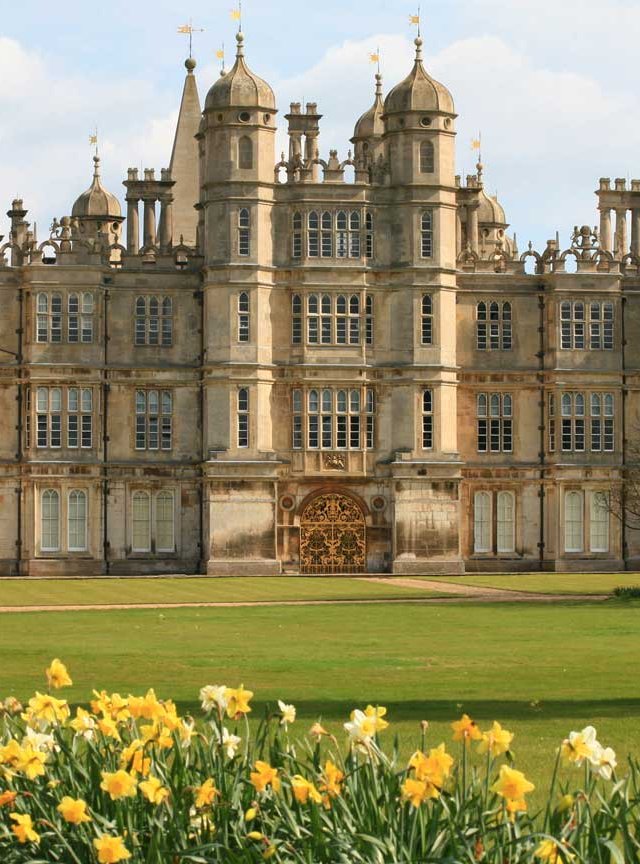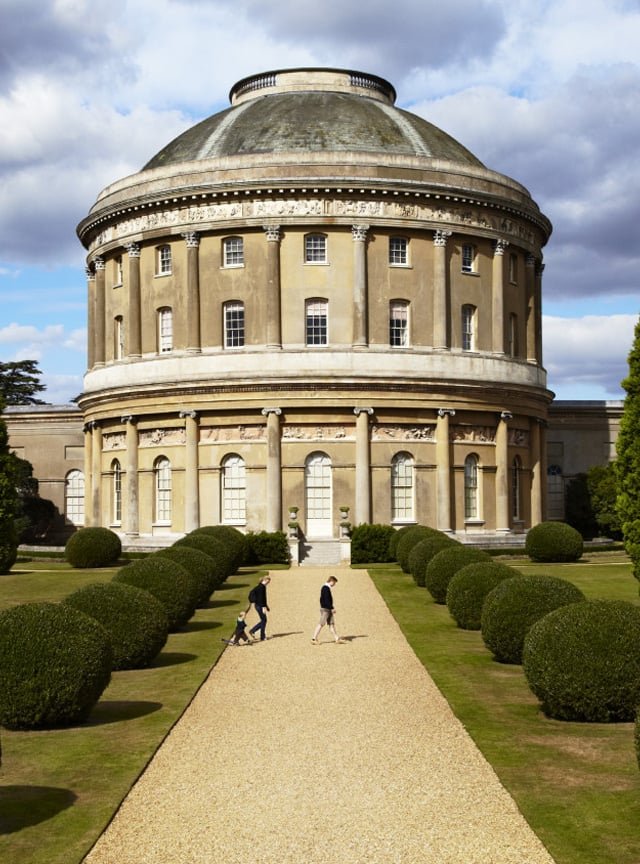Ten Capability Brown gardens

Lancelot 'Capability' Brown transformed landscape design in the 18th century. Brown's surviving landscapes surround some of our greatest stately homes and mansions. Here's 10 to discover.
Synonymous with serpentine lakes and rolling views, Lancelot 'Capability' Brown (1716-1783) was arguably the most successful landscape gardener of the 18th century, sometimes working on multiple estates at one time. The fashion for returning gardens from formal designs to spaces that had a more natural vista swept Europe in 1700s and Brown was the go to gardener for country houses and parks. Many examples of his horticultural architecture still exist today, here a ten of the finest, all free or discounted entry with a National Art Pass.

Burghley House
Horace Walpole said of the commission, 'A noble pile! Brown is ornamenting the Park and has built a gothic greenhouse and stables which are not bad, except that they do not accord with the house, which is not Gothic.'
In 1754 Brown set to work on this career-defining assignment; widening the river and making a serpentine lake, constructing the lakeside summerhouse and stone bridge, and planting trees in the park to assist the new sport of the time, game hunting. A visit here also gives the chance to see a portrait of Brown hanging in the State Rooms and some of Brown’s building works; he remodelled the chapel and tweaked the architecture of the house to aid better views of his picturesque landscapes.

Wimpole Estate
Capability Brown transformed what is known as North Park into a beautiful, natural landscape, complete with a forged ruined castle adding instant romance and mystique. Philip Yorke, 2nd Earl of Hardwicke, and his wife, Jemima, Marchioness Grey, had been impressed with Brown’s landscapes at Stowe where he had served as head gardener between 1742 and 1750. By 1769 he had been contracted to transform the grounds at Wimpole. Brown cleared great areas of land, simplifying the view with an elegant tree belt and creating three lakes, which from certain viewpoints appear to be one snaking river. The Gothic folly had been designed 20 years earlier for the earl’s father, but it was Brown who oversaw its construction and ensured the panoramic views from the top of the tower.

Audley End House and Gardens
In the 17th century, this grand mansion was one the most opulent and ambitious houses in Jacobean England. In the 18th century Sir John Griffin Griffin employed two of the most fashionable designers to renovate the estate: Brown was tasked with reimagining the surrounding landscape while Robert Adam would design most of its buildings. In the 1760s Brown set to work, removing the formal gardens to expose sweeping vistas, adding more natural planting and, of course, installing a serpentine lake. The circular Temple of Victory and Palladian bridge over the River Cam were both designed by Adam.

Harewood House
In 1797 the 22-year-old JMW Turner was commissioned to paint Harewood’s 1,000-acre parkland from several viewpoints. Some of the resulting paintings are now owned by Tate. Work on Brown’s momentous landscape had started more than 20 years earlier. Like many affluent aristocrats taking possession of their father’s assets in the mid-18th century, Edwin Lascelles wanted to make Harewood his own and set about commissioning architects, furniture makers, and Brown to redevelop the estate. Brown’s plans for creating a picturesque landscape across the vast park took six years to complete and included a 32-acre serpentine lake, naturalistic planting, plus cascade and encircling carriage drives. The Grade I Listed parkland remains much the same as Turner’s paintings; the idealised landscapes and scenic views are still plain to see today.

Compton Verney
Robert Adam’s remodelled 18th-century mansion sits at the centre of Brown’s 120-acre landscape. His work at Compton Verney was extensive, if not familiar: formal gardens were swept away, leaving vast plains of grassland; more than 2,200 trees were planted to assist the cultivation of game birds; a serpentine driveway replaced the formal tree-lined avenue and a large lake created from several smaller pools, a thatched ice house and greenhouse were installed. The Palladian-style church, which replaced the one Brown cleared to reveal his grand vista, is thought to have been designed by Brown himself.

Weston Park
Despite the formal gardens, Broderie Italian Garden and medieval deer park, you can still observe the distinctly Brownian landscapes at Weston Park. When Sir Henry Bridgeman inherited the estate he commissioned Brown to refashion the parkland, and his 1765 designs for the pleasure grounds included adding two lakes, creating Temple Wood and Shrewsbury Walk, laying the walled kitchen garden and replacing avenues of trees for more natural scatterings. The scheme took two years to complete and is constantly being restored today; work includes clearing the views to open out the vistas and dredging Temple Pool to accentuate the mirror-like finish.
The Roman bridge and Temple of Diana, which has been refurbished were designed by the architect James Paine in 1770.

Ickworth House, Park and Gardens
When Brown took on the commission at Ickworth in 1769, he was also operating as Head Gardener at Hampton Court Palace, an appointment made by George III himself. Fortunately for Brown, his role at Hampton Court did not interfere with his side projects, which also included Sherborne Castle and Weston Park.
The house and its grounds were created in homage to Italy, the country adored by Frederick Augustus Hervey, the 4th Earl of Bristol. Although we know that Brown was paid around £700 by the estate, it is not certain which elements he contributed when he began work. Many of the gardens surrounding the house are Victorian, but it is believed the idyllic English parkland has all the hallmarks of Brown.

Temple Newsam House
The 1,500-acre parkland surrounding Temple Newsam’s Tudor-Jacobean mansion was taken on by Brown in the 1760s. Only some elements of Brown’s scheme were realised, but the breathtaking views, serene rolling parkland and charming woodland are unmistakably the work of the great landscape architect. One of the unique treasures of Brown’s work here is the Little Temple, a Classical-style garden building with Gothic elements, which in its elevated position looked impressive from the house and afforded lovely views of the landscape.

Chatsworth
One of the most impressive stately homes in England, Chatsworth has been home to the Cavendish family since 1549. The 4th Duke commissioned Brown to modernise the garden and parkland, replacing the 1st Duke’s formal gardens with the then fashionable natural look; ponds and parterres were transformed into lawns, and American species of trees were extensively planted in naturalistic clusters. Brown’s designs for Chatsworth also included straightening and changing the course of the River.

Berrington Hall
Built in 1778-81 for Thomas Harley, the 5th son of the 3rd Earl of Oxford, Berrington Hall is one of the few masterpieces of architect Henry Holland to survive intact – and it also bears Brown’s familiar stamp. In fact, Berrington’s parkland was Brown's final project, and today features a commemorative walking route taking in a series of outdoor installations inspired by him. Commissioned by Harley to make the most of the Herefordshire views west towards Wales and the Black mountains, Brown’s park consists of more than 400 acres and includes a huge artificial lake complete with an island.
The more you see, the more we do.
The National Art Pass lets you enjoy free entry to hundreds of museums, galleries and historic places across the UK, while raising money to support them.